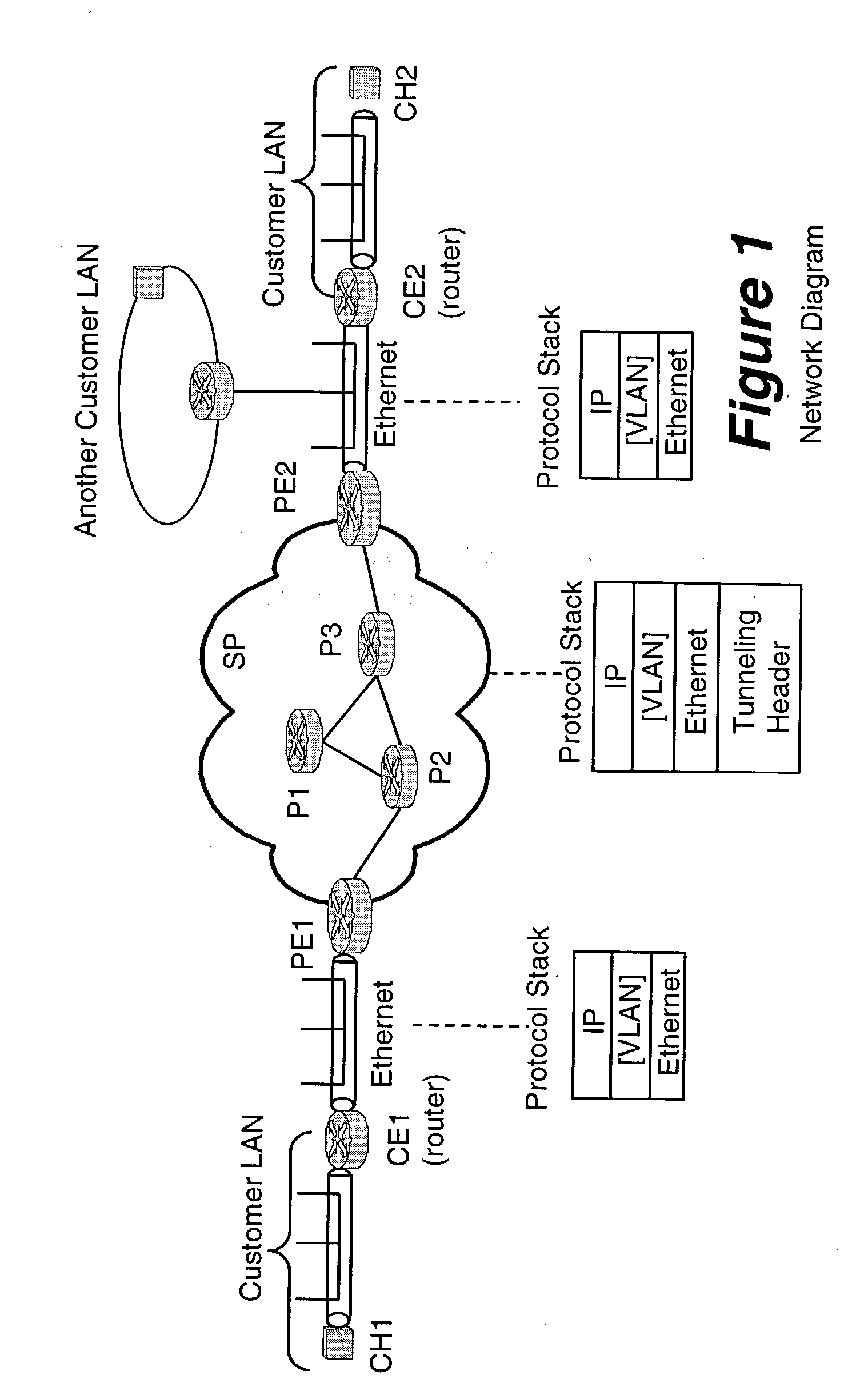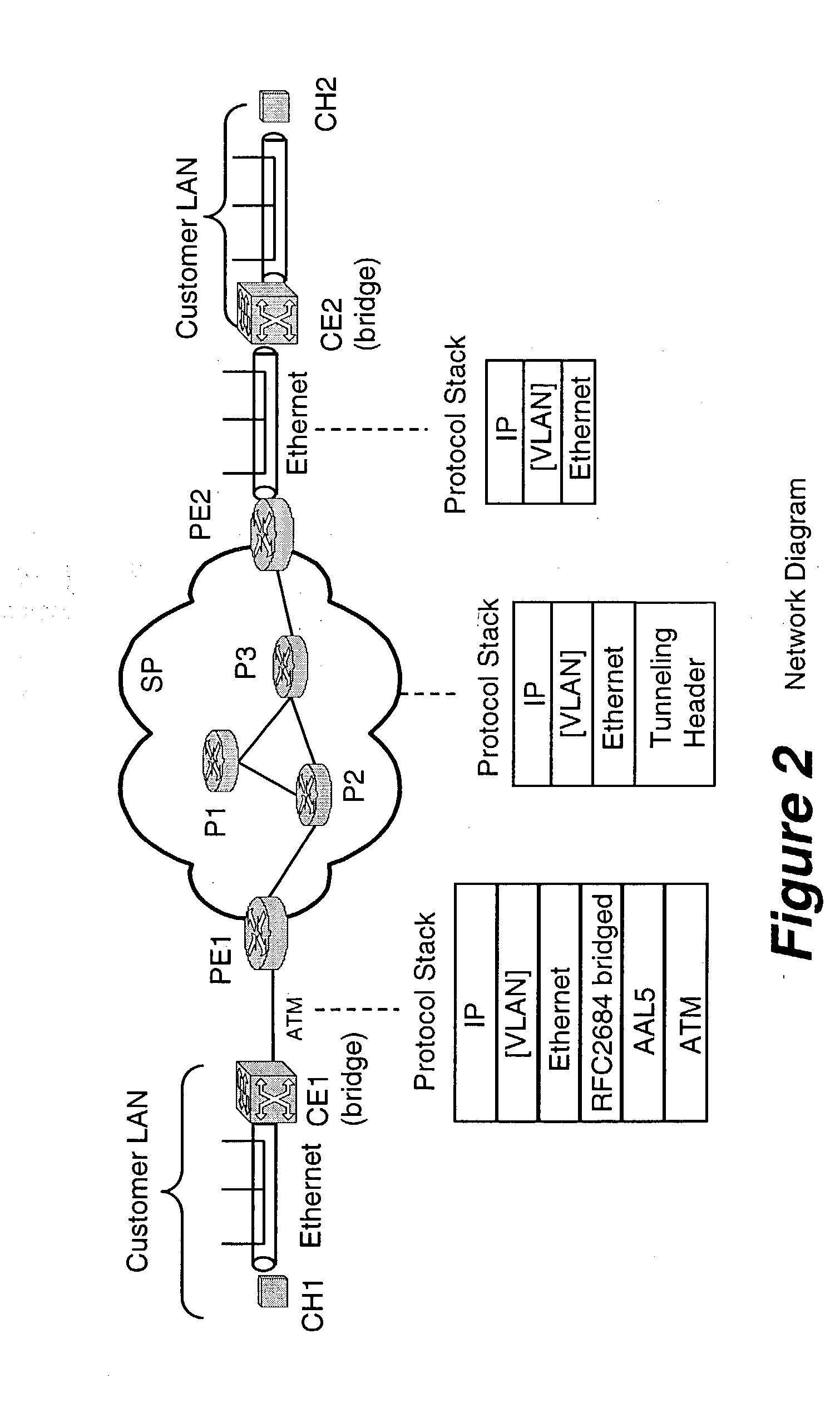Address resolution in IP interworking layer 2 point-to-point connections
a technology of point-to-point connections and resolution, applied in data switching networks, multiplex communication, digital transmission, etc., can solve the problems of not knowing anything about the network of service providers, and unable to solve the problem of recurren
- Summary
- Abstract
- Description
- Claims
- Application Information
AI Technical Summary
Problems solved by technology
Method used
Image
Examples
Embodiment Construction
[0037] Referring back to FIG. 3 which shows schematically an example of a layer 2 VPN. As described earlier, in order to provide the point-to-point connectivity, between CE1 and CE2, a common data format of IP is tunneled between PE1 and PE2. This data can be transported over any provider core network (e.g. ATM, FR, IP, L2TP, or MPLS) made up of provider devices, P1, P2, . . . Pn. CE1 and CE2 are edge devices of customer's LANs, on which local host computers are located. In the Figure, an interface between CE1 and PE1 is an ATM link whereas that between CE2 and PE2 is an Ethernet link. The figure also shows schematically that the Ethernet serves other edge devices in VLAN. As CE1 and CE2 are on the respective LAN and have a point-to-point connection with the respective local host computer, a connection between CE1 and CE2 are considered equivalent to a connection between the host computers.
[0038] There are two aspects to the present invention.
[0039] (i) The first is forwarding, to C...
PUM
 Login to View More
Login to View More Abstract
Description
Claims
Application Information
 Login to View More
Login to View More - R&D
- Intellectual Property
- Life Sciences
- Materials
- Tech Scout
- Unparalleled Data Quality
- Higher Quality Content
- 60% Fewer Hallucinations
Browse by: Latest US Patents, China's latest patents, Technical Efficacy Thesaurus, Application Domain, Technology Topic, Popular Technical Reports.
© 2025 PatSnap. All rights reserved.Legal|Privacy policy|Modern Slavery Act Transparency Statement|Sitemap|About US| Contact US: help@patsnap.com



